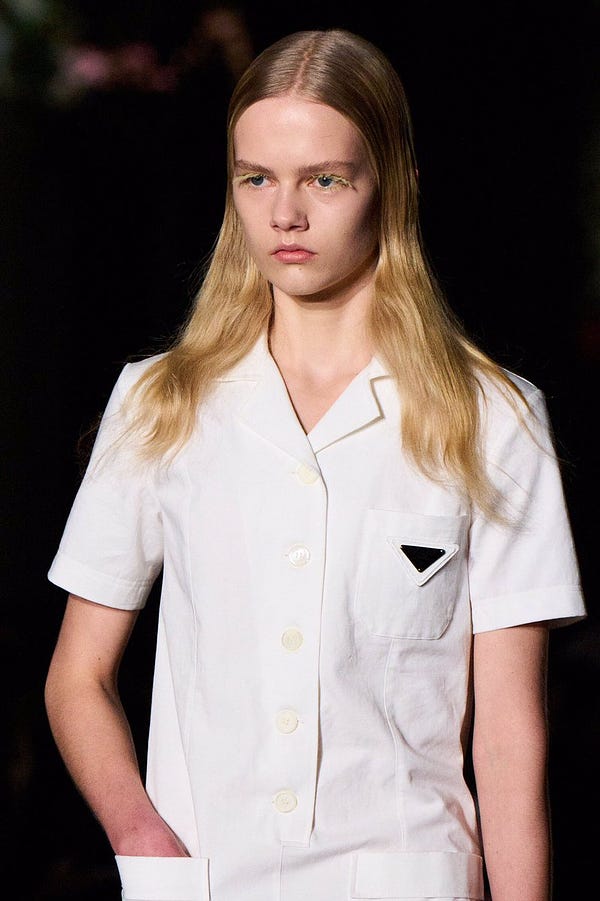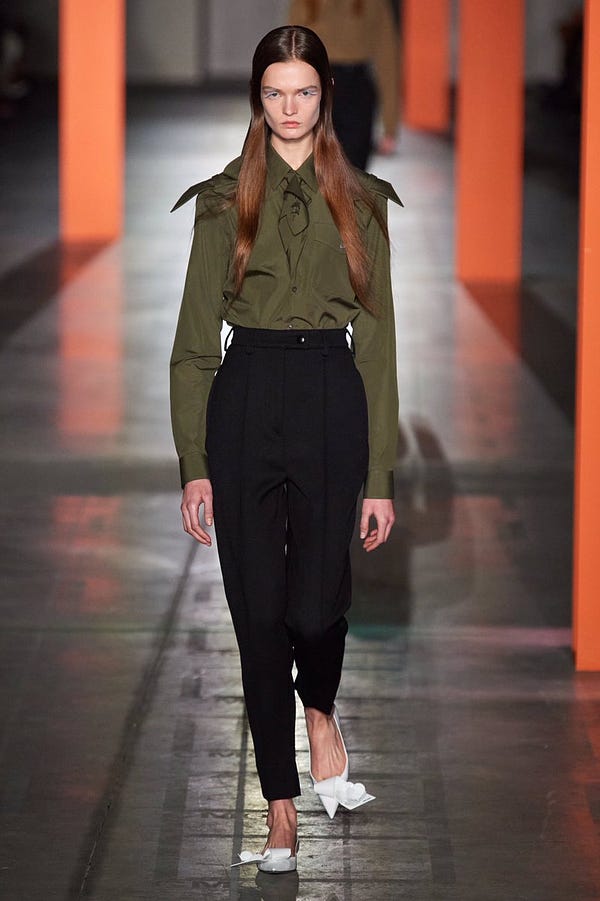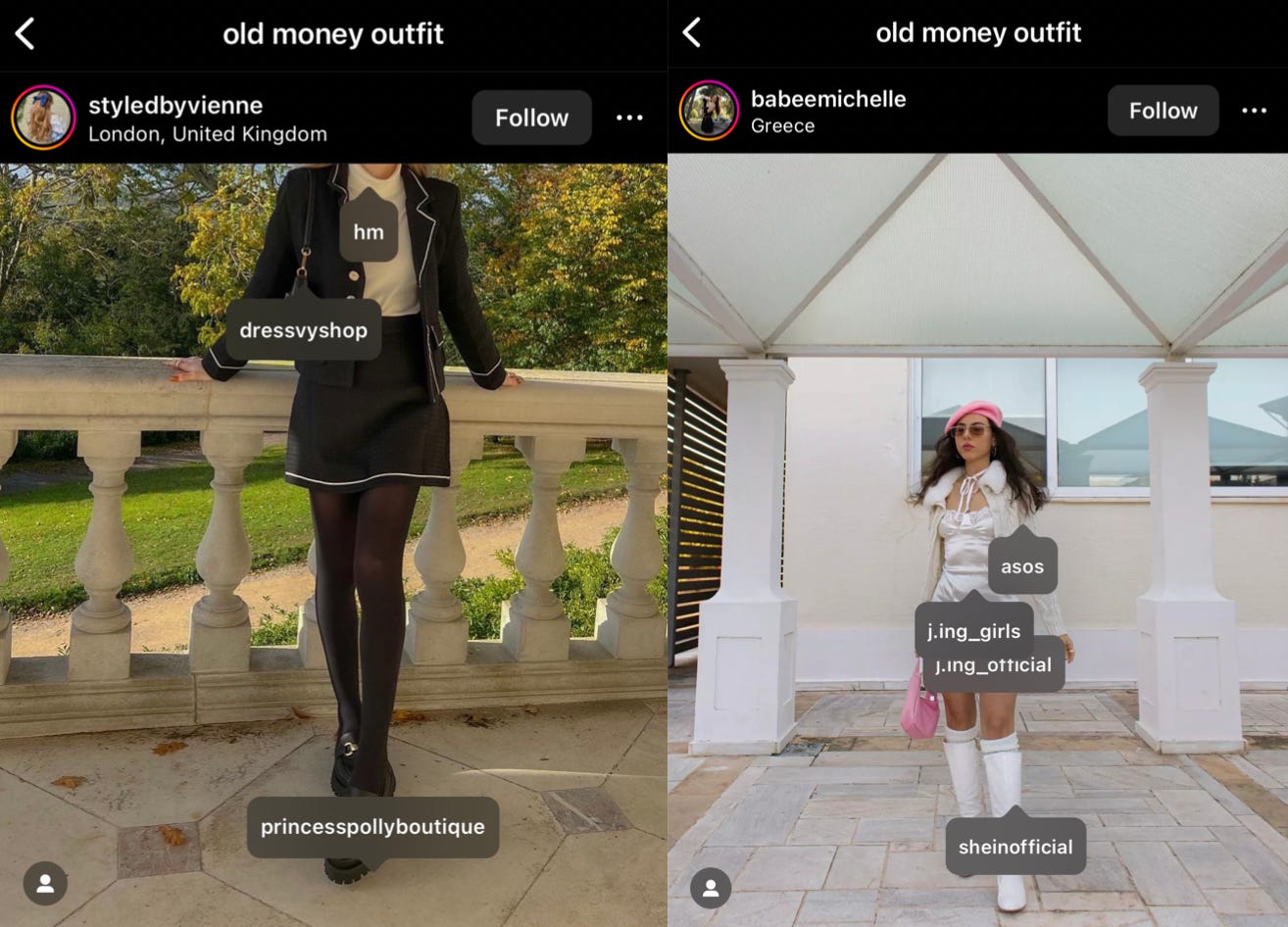When Capitalism Becomes Cosplay
The Old Money Aesthetic, Poor-Core, and Why You Shouldn't Be Fooled
On February 22, 2023, a press release from H&M announced a collaboration between the fast-fashion retailer and the luxury fashion house, Mugler, available in select stores this spring. Although this announcement is only the newest iteration in a long standing history of collabs between high-end brands and accessible retailers, the general reaction to this news greatly differs from those in years past.
In the early 2000s, luxury brands such as Oscar de la Renta and Isaac Mizrahi began producing clothing lines at department stores such as Dillard’s and Burdines, respectively. In fact, H&M was among the first retailers to jump on this trend in their 2004 collaboration with, at the time, Chanel’s creative director Karl Lagerfeld. As this marketing strategy made headway, there were growing concerns with how these once elite and exclusive brand names would look sewn into blue-collars.
“At one time, designer slumming was inconceivable. The point of the fashion enterprise was to create a symbiotic aura of aristocracy and exclusivity between couturier and client, so that both could look down on the (poorly dressed) hoi polloi.” - Mimi Schwartz, Cheap or Chic: The new lines by Isaac Mizrahi and Oscar de la Renta are inexpensive, but how do they look?, Slate Magazine, Dec. 2004.
However, when the news about H&M x Mugler made its rounds, the court of public opinion simply nodded their heads, muttered “makes sense,” and kept moving forward.

Some might chalk this up to personal grievances with how Casey Cadwallader is handling his position as the creative director of Mugler. However I, with Cadwallader grievances of my own and an innate ability of reading too far into things, see this as just another piece in a sociopolitical puzzle looming in the fashion zeitgeist.
As a generation of digital natives relying on an algorithm to perfectly curate our personal styles, we have to adapt to its own unique language. This often comes at the price of shoving ambiguous ideas into much smaller boxes. One popular way of doing so is by tagging on the internet colloquialisms “aesthetic” and “-core” to the end of our Pinterest search bar to indicate that we are, in fact, demanding a perfectly wrapped artistic selection of style inspiration. However, by doing this, said styles are completely stripped of their individual contexts and shoehorned into those more digitally desirable.
One of the front runners of this form of keyword searching is the aspirational trend known as the “old money aesthetic.” This style, heavily coded by the wardrobes of 1960s jet-setters and Gossip Girl’s Blair Waldorf, allows the opportunity to dress as though we have a vacation house in The Hamptons without committing to the tax bracket that comes with it.
However, the internet was quick to call out the visual inconsistencies between this aesthetic and the real wardrobes of modern aristocracy. This, of course, is because of that precious context excluded from Pinterest vision boards.

One of the largest influences on the old money aesthetic comes from the portfolio of American photographer, Slim Aarons. Known for his candid photographs of the daily lives of high society, Aarons’s camera lens acted as a fly-on-the-wall in the resort hotels and vacation homes of the world’s most famous socialites. What cements his legacy as one of history’s greatest photographers was his ability to show the working class a crack in a very, very narrow door. However Aarons’s portfolio can only act as a time capsule of this aristocratic aesthetic because in the 1980’s, when the esteemed photographer retired, that narrow door was then sealed shut.
So for more modern examples of this aesthetic, we must turn on our televisions. For as long as I’ve been engaged in internet fashion discourse, one name consistently remains as part of the discussion: Blair Waldorf. This main character from the 2007 teen drama, Gossip Girl, lives eternally in High Fashion Twitter moodboards and, for many 20-something year olds, served as the initial interest in the world of fashion.
This means our options for dressing liked the “old money” are slim (pun intended). One must wear clothes that are 50 years out-of-date or dress up like a character on TV, however, both are merely costumes.
And while a select few are masquerading as the upper crest, another group of the working class are actively trying to hunt them down.
With the constant threat of an impending recession, the general tolerance for opulent displays of wealth are becoming lower and lower, thus ushering in recession-core or, as Roisin Lanigan puts it, revolutioncore.
“As many have pointed out in online coverage of so-called recessioncore, there’s no authenticity to this as a fashion trend. It’s simply ‘an opportunity for celebrities to cosplay being poor’. The term is obviously catchy enough for us to project our economic and sartorial worries onto; under the hashtag ‘recessioncore’, TikTok creators are using it to talk about the decline of post-pandemic ‘dopamine dressing’, logomania and the un-ostentatious displays of wealth through fashion — but it’s ultimately a misnomer. Recession doesn’t come for the uber-rich and famous the same way it comes for us normals, but by pretending it does, they can try to save some face during the looming collapse. So we don’t eat them. Or at least cancel them.” - Roisin Lanigan, It's not recessioncore, it's revolutioncore, i-D, Feb. 2023.
We see this witch hunt in real-time as the internet turns their back on some of their most beloved influencers who have gained upward mobility in the fashion industry. This is demonstrated in the Instagram comments of content creators like Emma Chamberlain and Ashley Rous, better known as bestdressed. The truth of the matter is, this resentment doesn’t even have to come from a direct display of wealth, but, since social capital is its own form of currency, a mere association with it will suffice.

So if proximity to the fashion industry is enough of an excuse for persecution, what does that mean for the fashion industry itself? More costumes, of course.
For Prada’s Fall/Winter 2023 collection, Taking Care, Miuccia Prada and Raf Simons drew inspiration from the uniforms of nurses, the military, and the working woman. As the show’s title suggests, this collection is a way of honoring those who “take care” of our society - members of the working class.















But how much of an honor is it to replicate the uniform of those who cannot afford to wear your clothes? and if the target demographic isn’t the people you are parroting, it must be someone.
Which brings us to the era of inconspicuous wealth or, as Matthieu Blazy defines it, Stealth Wealth, with his new technique of disguising leather as other textiles acting as a literal example of something pretending to be something else it is not.
“‘Viewing clothing as a dialogue between maker and wearer rather than a spectacle to be beheld by the public, Blazy’s Bottega (the newNew Bottega, if you will) taps into the more private pleasure of “quiet power”,’ according to the press notes. Some of Blazy’s most impressive creations for Bottega Veneta are the most innocuous-looking. Embodying the notion of stealth wealth, the opening look appears at first glance to be a simple pair of dark low-rise blue jeans teamed with a white tank top. However, bestow it with a second look and you’ll see that both the jeans and tank are crafted from leather, a key element of Bottega Veneta’s heritage.” - Theo Rosen, Matthieu Blazy’s Bottega Veneta FW22 Collection Puts Forward A Unique Take On Stealth Wealth, Albert Review, Mar. 2022.
Some (Demna Gvasalia) people take it to new extremes by financially exploiting the appearance of extreme poverty. Balenciaga, a brand that continues to be adored by celebrities despite its recent controversies, is the loudest voice in a movement that can only be bluntly defined as poor-core.
Poor-core, otherwise known as “homeless chic”, exists not in necessity, but in its ability to be nonexistent. In other words, it exist because it can. It exists because of the upper-class’s obsession with self-actualization and justifying (or apologizing) for their wealth, so they pay a hefty price for their assets to look like yours.
“Homeless people, totally without a safety net, are living at the very bottom of that pyramid. People who live at the very top, in the heady realm of ‘self-actualization,’ can only see the homeless through their own extremely privileged lens. It’s a phenomenon akin to cultural appropriation.” - Leeann Duggan, Why Fashion Needs To Quit It With “Homeless Chic”, Refinery29, Jan. 2015.
While these designers play defense, others rely on hanging their universally recognizable logos and motifs on the affordable racks of H&M. This is a last ditch effort to blur the lines between us and them and, since the fashion industry is always multiple seasons ahead of the general public, they have been doing so long before there was talk about a global recession. But of course they knew it was coming, because they are partially responsible.
So, again, this H&M x Mugler collaboration really comes as no surprise. Because, in this economic crumble, the only way for the working class to thrive and for high society to survive is to become reflections of each other.






















